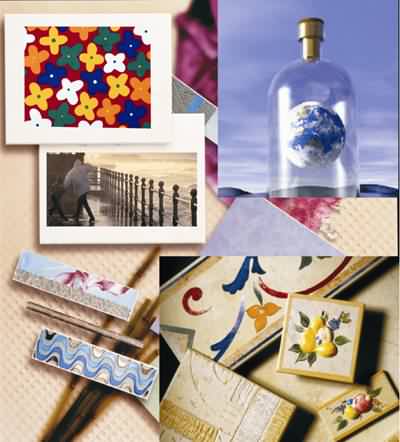| 2003 |

|
YEAR BOOK |
University of Limerick & Materials Ireland
|
New inkjet printer allows digital decoration of ceramics and glass
|

The Materials Ireland Research Centre at the University of Limerick is conducting an R&D project, funded by Enterprise Ireland through the Advanced Technology Research Programme 2001, to develop a multi-colour inkjet printing process which can overcome these limitations. As well as providing a greater ability to produce higher quality prints more efficiently, the digital process also offers superior automation, shorter set-up time, reduced factory floor space, and greater flexibility to produce varied prints in large or small numbers.
The Materials Ireland team, under the direction of Professor Stuart Hampshire, is refining a prototype industrial scale inkjet printer, comprising state-of-the-art inkjet technology. Novel ink formulations were developed specifically for the application in four process shades Cyan, Magenta, Yellow and Black (CMYK) to allow multi-colour printing. These consist of pigmented ceramic powders dispersed in an organic material. A number of additional minor ingredients are included, in a careful balance, to control the properties of the ink, such as surface tension, viscosity and to inhibit sedimentation of the ceramic powder. The inks have a long shelf life, excellent stability, can accommodate a large volume of ceramic, and can be printed on non-absorbent surfaces. After printing, the ceramic or glass article is passed through a high temperature kiln, which burns off the organic material, and causes the ceramic to fuse to the substrate to form a permanently glazed print.
The process developed at Limerick is a unique single stage decoration process for ceramic and glass products and has been designed to allow easy integration into conventional production lines. Considering the advantages of the digital process and its ability to integrate with other industrial processes, it is anticipated that the inkjet technology will revolutionise the international glass and ceramic decoration industry.
Contact: Joseph Doyle, Senior R&D Consultant, Materials Ireland, University of Limerick;
Tel: 00-353-61-202465; Fax: 00-353-61-202967; E-mail: [email protected] ; Web: www.mirc.ul.ie